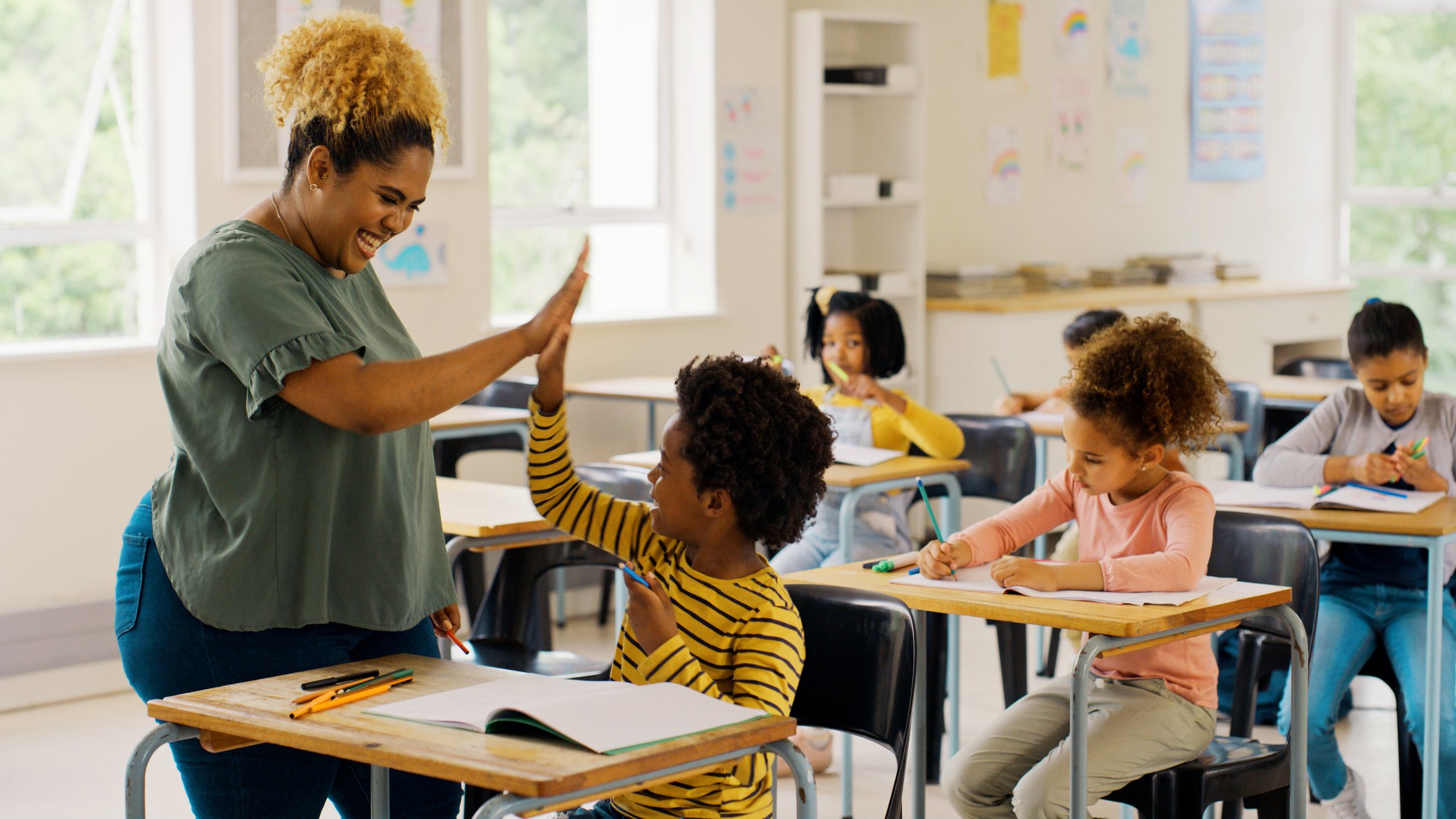Acknowledge Positive Behavior

All students need this every day, but some students need more. Equity means matching your use with students’ needs.
Definition: Genuine, positive, and specific acknowledgment (i.e., praise or positive reinforcement) for behaviors that align with classroom expectations and/or individual student growth.
Provide different styles of praise to match student preferences and needs.

Resources for K-2 Educators
Handouts
PBIS Student Teacher Game(pdf)
Websites
https://www.panoramaed.com/blog/guide-to-behavior-specific-praise-in-the-classroom
Videos
This 2-minute video, above, is an example of why specific feedback is important.
Resources for 3-5 Educators
Handouts
PBIS Student Teacher Game(pdf)
Websites
https://www.panoramaed.com/blog/guide-to-behavior-specific-praise-in-the-classroom
Videos
This 2-minute video, above, is an example of why specific feedback is important.
Ensure that all students receive praise daily.

Resources for K-2 Educators
Documents
Acknowledging Positive Behavior Tracking Sheet (Word)
Handouts
Praise and Encouragement (pdf)
Websites
You can reward and keep track of behavior with Class Dojo.
Videos
This 9-minute video, above, gives examples of specific behaviors and praise that can be used in.
Resources for 3-5 Educators
Documents
Acknowledging Positive Behavior Tracking Sheet (Word)
Handouts
Praise and Encouragement (pdf)
Websites
You can reward and keep track of behavior with Class Dojo.
Videos
This 9-minute video, above, gives examples of specific behaviors and praise that can be used in.
Prioritize praise of behaviors that facilitate inclusivity and community building (not just behaviors aligned with compliance with adult authority).

Resources for K-2 Educators
Documents
Understanding How Our Feelings Impact Greetings (pdf)
Websites
You can find useful resources for praising students and building communities on the PBIS website.
Videos
This 30-second video, above, is an example of descriptive feedback.
This 30-second video, above, demonstrates descriptive feedback during community circle.
Resources for 3-5 Educators
Documents
Understanding How Our Feelings Impact Greetings (pdf)
Websites
You can find useful resources for praising students and building communities on the PBIS website.
Videos
This 30-second video, above, is an example of descriptive feedback.
Gain input from students and their families about strengths and/or what motivates them, to inform praise statements.

Resources for K-2 Educators
Handouts
All About Me (pdf)
Back to School Family Survey (pdf)
Websites
Click here to access a Google doc a teacher created to send out to families asking about their child's interests, strengths, and preferences.
This website lists out individual student characteristics that may be important to consider when individualizing praise.
Resources for 3-5 Educators
Handouts
All About Me (pdf)
Back to School Family Survey (pdf)
Websites
Click here to access a Google doc a teacher created to send out to families asking about their child's interests, strengths, and preferences.
This website lists out individual student characteristics that may be important to consider when individualizing praise.
Additional Resources for Acknowledging Positive Behavior
Handouts
This handout, by Gregg A. Bieber, Ph.D., provides a useful breakdown of positive verbal motivators and their effects on students. It also provides examples of behavior-specific praise you can try out with your students.
This handout provides instructions on how to utilize Mystery Motivators to reward students for appropriate behaviors.
Websites
Purpose: To offer guidance, promote prosocial behavior, help students feel good about themselves, and enhance motivation for contributing to the classroom community or individual growth.
Examples:
- I’m noticing that you’re asking some great questions. Thank you!
- I like that you’re doing being quiet and on task!
Thank you for sitting down, X, great job!
Tips:
- Praise can be general (e.g., “Good work”) or labeled and behavior-specific (e.g., “Good job putting your things away, Sharon”). When possible, praise statements should be labeled and behavior specific as to communicate with the student specifically what they are being acknowledged for.
- When possible, praise statements should immediately follow the desired behavior.
- Use praise statements (a) as a tool for changing or reinforcing behavior, (b) as a tool for building student-teacher relationships, and/or (c) as a tool for highlighting student strengths and worth in front of peers to bolster peer relationships.
- Strategically use praise for varied reasons in different situations. Ensure that the behaviors you acknowledge as positive align with diverse cultural norms and learning styles. Recognize that different students may demonstrate strengths and growth in various ways.
- Communicate with caregivers about their use of praise and ask for input to enhance comfort and engagement for all students.
- Use rewards that reflect your students’ cultures and interests.
- Take time to get to know students and consider how to modify praise to meet their needs (e.g., how to deliver praise to a student who may be uncomfortable receiving praise).
- Acknowledge each student’s unique accomplishments. Recognize their specific efforts and achievements, considering their strengths and challenges.
